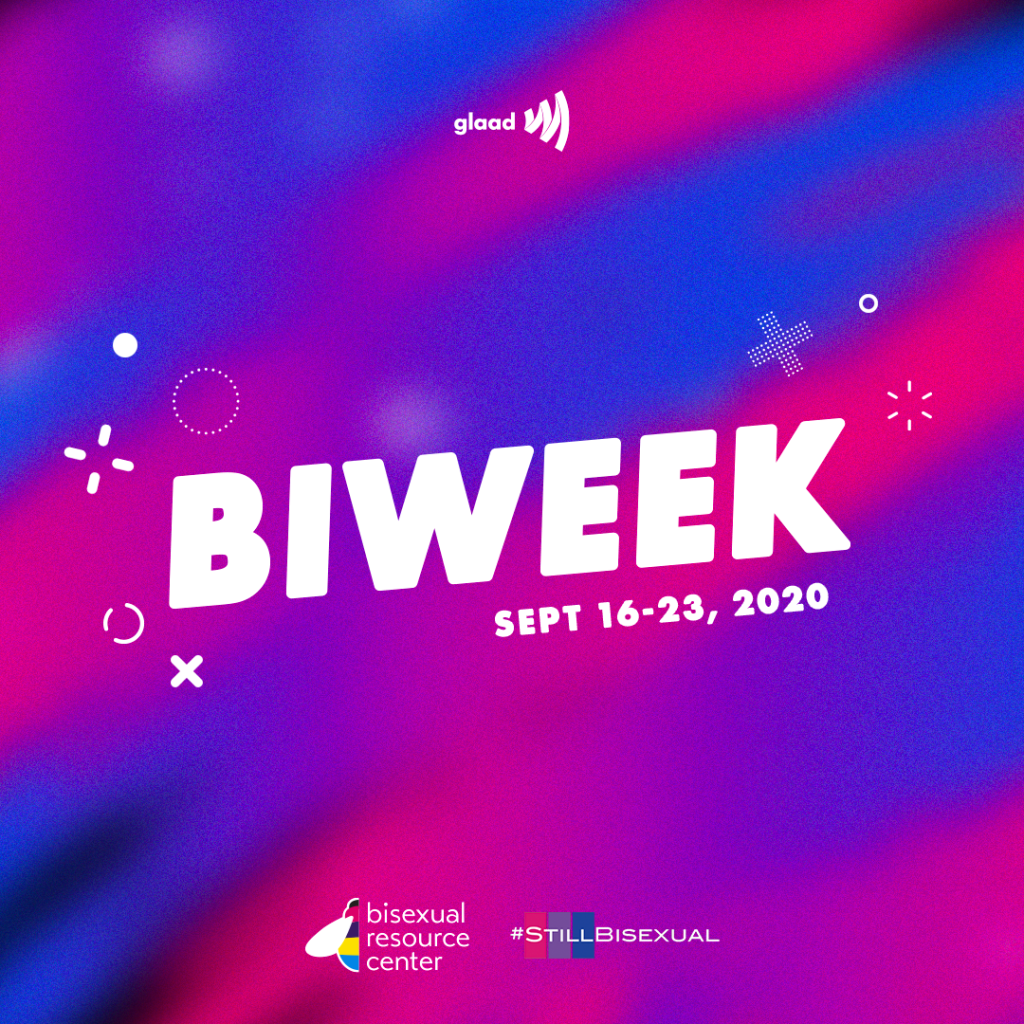Welcome to the start of Bisexual+ Awareness Week (#BiWeek)! In preparation for the content coming out of GLAAD around the experiences of the bi+ community, below is a (non-exhaustive) list of common terms frequently used within the bi+ community as well as some common myths and ways to confront them.
TERMS
Bisexual/Bi
A person who has the capacity to form enduring physical, romantic, and/ or emotional attractions to those of genders like their own and genders unlike their own. People may experience their attractions in differing ways and degrees over their lifetime. Some bi+ people are attracted to people of all genders equally. Others may have attractions that are predominantly towards one gender over others.
Bi Erasure
A pervasive problem in which the existence or legitimacy of bisexuality+ (either in regard to an individual or as an identity) is questioned or denied outright.
Biphobia
Aversion and prejudice against bisexuals+ that are often based on stereotypes. These include inaccurate associations with infidelity, promiscuity, and transmission of sexually transmitted infections.
Bisexual+, Bi+, Bisexual+/Bi+ Umbrella
Encompassing terms for people with the capacity to be attracted to more than once gender. Includes people who identify as bisexual, pansexual, fluid, queer, and more.
Pansexual/Pan
A person who has the capacity to form enduring physical, romantic, and/ or emotional attractions to people of all genders or to people regardless of gender.
Polysexual
An individual who has the capacity to form enduring physical, romantic, and/ or emotional attractions to a range of people of various – but not necesarily all – genders. For example, a woman may identify as polysexual if she is attracted to other women (cis and trans) as well as nonbinary individuals.
Queer
Once a pejorative term, now reclaimed by some LGBTQ people to describe themselves. Typically used as an umbrella term to describe someone whose sexual orientation or gender identity falls outside of cisgender and heterosexual. It is important to note that you should only describe someone as “Queer” if they use that as a label for themself.
Fluid
Attraction that changes or might change over time to people of various genders.
MYTHS
Below are some common myths abouse bisexual+ identities & quick explainers about why these myths are inaccurate for the community as a whole.
Myth 1: Identifying as bisexual is inherently trans-exclusive or excludes non-binary individuals.
Bisexuality+ is no more inherently transphobic than being straight or gay/lesbian. In fact, a majority of Transgender and Gender-Nonconforming people identify as Bisexual+. Telling stories about Trans/Gender-nonconforming people who identify as bi+ is a helpful way to counter this myth.
Myth 2: Bi+ people have to pick only one identity and stick with it forever.
It is important to respect the terminology that a bi+ person uses at different points in their life, and to understand that people may identify with different terminology at different times. For example, someone may identify as “pan” and then later realize that they feel better represented by the word “queer.” Additionally, identities can be held together and change over time. For example, some people may identify as both “bi” and “pan” because they believe their orientation matches both definitions.
Myth 3: Bi+ people are either gay or straight.
Many bi+ individuals do not identify as “gay/lesbian” or “straight” often because those terms do not accurately describe their orientation or experiences. It is important to use the terminology that a bi+ person uses to describe themselves, even if describing someone as gay/lesbian or straight seems easier. Bisexual+ identities will only be understood better if they are represented more accurately.
Myth 4: Bisexual+ people are more promiscuous than gay/lesbian or straight people.
Bisexual+ people have the same capacity to choose or not choose monogamy as gay/lesbian or straight people. There is no reason to perpetuate the myth that bisexual+ people are less likely to be monogamous than people with other identities.
Myth 5: Bisexual+ people are “straight passing” or have “straight privilege.”
A bi+ person can be subjected to biphobic discrimination regardless of their partner’s gender. Arguing that a bi+ person has “straight passing privilege” because of their orientation promotes an inaccurate understanding of what it means to be bi+. It also erases the struggles and experiences unique to the bi+ community. For example, bi+ people face life-threatening challenges such as increased rates of Intimate Partner Violence, Mental Illness, and Substance Abuse than their gay/lesbian & straight peers, and have less access to resources due to discriminatory attitudes towards bisexual+ identities.
About BiWeek
Annually, from September 16-23, join GLAAD, the Bisexual Resource Center, and Still Bisexual in recognizing the bisexual+ community for Bisexual Awareness Week, culminating in Celebrate Bisexuality+ Day on September 23.
Co-founded by GLAAD, Bisexual+ Awareness Week seeks to accelerate acceptance of the bi+ (bisexual, pansexual, fluid, no label, queer, etc.) community. #BiWeek draws attention to the experiences, while also celebrating the resiliency of, the bisexual+ community.
Throughout #BiWeek, allies and bi+ people learn about the history, culture, community, and current policy priorities of bi+ communities.













